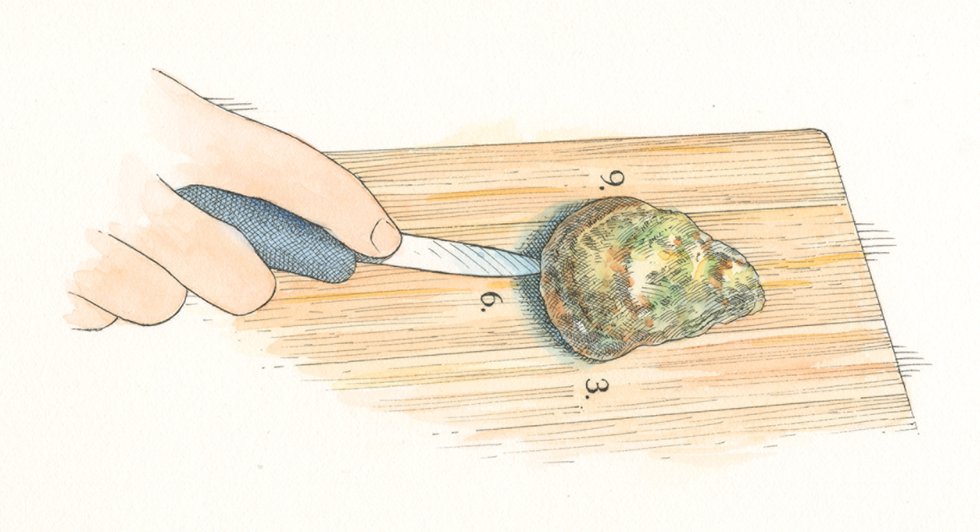Take a stab at opening oysters the right way—or the other right way.
Three-time National Oyster Shucking Champion Deborah Pratt of Middlesex County likes to go in through the bill. Chris Buck, owner of Ruby Salts Oyster Company in Cape Charles, is a hinge man.
Pratt can shuck as many as two dozen oysters in just two minutes and has competed on the international oyster-shucking stage, finishing second in the 1997 world championships in Ireland. Owner since 2010 of his own oyster company, Buck first learned to shuck while working at 42nd Street Oyster Bar in Raleigh, North Carolina, where he opened 1,000 oysters per night. Both sure can shuck an oyster, and boy can they shuck it fast.
But whose method is best? Pratt favors opening the oyster through the bill—or lip, the larger rounded end of the shell—because she says it’s quicker and cleaner. Buck says that since his Ruby Salts are raised to have thicker shells than the faster-growing triploid variety, he prefers to open them through the hinge.
It’s tough to name a winner, so here we present both methods for you to try. Now, you can decide which is best.
The Bill Method

Illustration by John Burgoyne
1. Place the oyster on a cutting board and orient it with the cup side down and the lip (rounded end) facing toward you.

Deborah Pratt
Photo by Cameron Davidson
2. Insert the tip of the knife at 3, 6 or 9 o’clock, depending on the shape. If the lip curves out more at 3 or 9 o’clock, go in at those points respectively. If the oyster is straighter or more evenly curved, go in at 6 o’clock.
3. Pick up the oyster and hold it in the palm of your hand, keeping the cup side down and the lip inward.
4. Twist the wrist inward, moving the knife back and forth to insert it further. Push up with the knife to pry the shell open.
5. Flip the oyster so that the flat side is in your palm, and sweep the knife under the oyster meat and along the inside of the flat shell to cut the adductor muscle.
6. Flip the oyster back over, returning the loosened meat to the cup, and then remove the top shell.
The Hinge Method

Illustration by John Burgoyne
1. Wear a glove, and rest the back of your hand on a counter, keeping your elbows in close to your sides. Orient the oyster in the palm of your hand with the cup side down and hinge (pointed end) facing toward you in order to keep the brine inside the shell.

Chris Buck
Photo by Liz Watson Photography
2. Insert the tip of the knife into the hinge and apply steady pressure, working the knife in an up-and-down motion. Do not twist the knife. The up-and-down motion follows the contour of the shell; twisting the knife will grind the shell and create debris.
3. Feel the oyster pop as the muscle releases. Swipe the blade along the inside of the top shell to cut the top adductor. Remove the top shell.
4. Roll your wrist, flipping the knife, and sweep the blade along the bottom of the cup, following the curve of the shell, to cut the bottom adductor and loosen the meat. Keeping the blade close to the contour of the cup will prevent damaging the meat.
For more on Virginia’s oysters, pick up a copy of Smoke & Salt 2018, on newsstands now.









